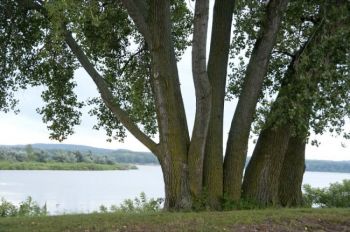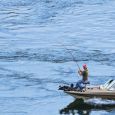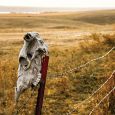The Gift of South Dakota
Subscriptions to South Dakota Magazine make great gifts!
Subscribe today — 1 year (6 issues) is just $29!
River Conservation — Where's the Downside?
Sep 18, 2013
The U.S. Fish and Wildlife Service and the National Park Service have a pretty good idea. (No, not closing down the D.C. Booth Fish Hatchery in Spearfish; that's a dumb idea.) The feds would like to create the Niobrara Confluence and Ponca Bluffs Conservation Area along the Missouri River between Pickstown and Sioux City. They'd like to purchase land and conservation easements from willing landowners in South Dakota and Nebraska to "conserve important wildlife habitats, increase quality recreational opportunities, preserve sensitive cultural sites, and maintain sustainable farming and ranching operations in the region."
Let's see: landowners get paid, critters get cover, hunters and kayakers get better scenery...where's the downside?
Senator Dan Lederman (R-16/Dakota Dunes) must see a downside. He's hollering that the Niobrara/Ponca conservation plan is a nefarious "federal land grab" that "threatens private property rights." Lederman's conservative henchblog is promulgating accusations that the feds haven't given affected landowners enough notice or enough time to comment on the plan.
I can only assume that Lederman's attacks are motivated by political considerations. They certainly aren't motivated by facts or a consistent commitment to conservation or property rights.
The Fish and Wildlife Service and National Park Service have been gathering public input on the Niobrara/Ponca project since winter 2012. The current comment period, which ends September 30, is actually an extension (announced last June) of the original comment period, which was opened on April 2. The feds have more than doubled the comment period to give citizens six months to study and weigh in on the project's draft environmental impact statement.
The feds have invited public scrutiny in many ways. In addition to the usual notices in the Federal Register, they have sent landowners postcards with information on the conservation easement plan. They have held two rounds of public meetings throughout the project area. When the April meetings got snowed out, FWS and NPS rescheduled. They're not exactly keeping the Niobrara/Ponca project secret.
As for the threat to private property rights, I can't figure out what Senator Lederman is talking about. Everything the feds say about the Niobrara/Ponca plan speaks of working with willing, voluntary landowners. FWS and NPS can't use eminent domain to force landowners to sell... unlike TransCanada, which uses eminent domain to build its Keystone pipeline system, a project Lederman and friends wholeheartedly support.
If you don't like the Niobrara/Ponca conservation plan, if you still want to be able to drain and plant crops and build industrial feedlots on your land, go ahead: the feds can't make you sell them your land or grant you a conservation easement for this project.
But if you own land near the Missouri or Niobrara, and if you've been sparing some prairie grass and wetlands the plow, and if you'd like some compensation for taking a pass on six-dollar corn, the feds have a good deal for you, for river critters, and for the rest of us... if, and only if, you are willing.
Editor's Note: Cory Heidelberger is our political columnist from the left. For a right-wing perspective on politics, please look for columns by Dr. Ken Blanchard every other Monday on this site.
Cory Allen Heidelberger writes the Madville Times political blog. He grew up on the shores of Lake Herman. He studied math and history at SDSU and information systems at DSU, and has taught math, English, speech, and French at high schools East and West River.











Comments
Downside is spending money we don't have......where's the upside to that?
The Dakota Grassland Conservation Area is an even larger preservation initiative:
“Landowner interest is very high,” says Harris Hoistad, a refuge manager within the Dakota Grassland Conservation Area. “We have a list of people waiting for us to work on their easement offer, and the infusion of Migratory Bird Conservation Commission funds has helped to get us off to a great start. We have a long way to go to reach the goals of the project, but we are making progress.”
http://www.fws.gov/refuges/RefugeUpdate/SepOct_2013/prairie.html
\
Rewild the West.
http://plaintalk.net/2013/08/comment-period-for-poncaniobrara-land-protection-plan-extended/
This project is not deficit spending. The money comes from Duck Stamps and from the Land and Conservation Fund, which comes from an excise tax on offshore oil drilling. Your tax dollars will not be harmed in the making of these conservation areas.
Unless you can show that Duck Stamp and L&C revenues will increase, then taking money from those sources to fund this new program must necessrily decrease funds available to current projects. Of course, no federal program is cut (or rarely so) , so we'll have to borrow MORE to cover the current and the proposed programs.
That's the way that the federal government operates.
To suggest that this new conservation proposal won't cost any more is ludicrous.
NPD cannot take care of the land as well as private owners have for hundreds of year. Tthere is not enough money, staff or vested interest in maintaining the property. Parks are closing early this year due to lack of funds.
http://interested-party.blogspot.com/2012/10/colorado-71-crosses-south-platte-just.html
http://www.cprs.org/membersonly/Winter07_PropertyValues.htm